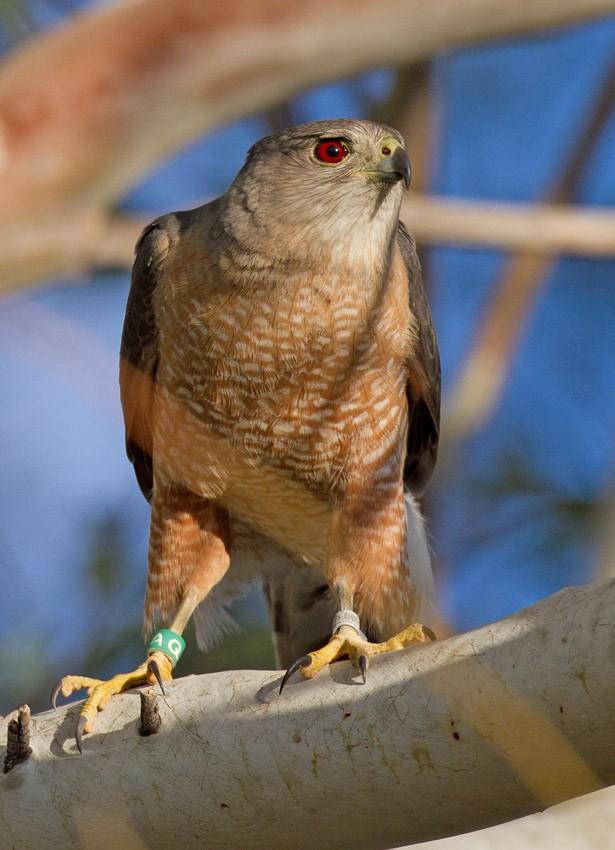It’s a bird! It’s a plane! No… It really is a bird. As students stroll about on campus, they may find what wildlife researchers at the UA have been studying for the past 20 years: the Cooper’s Hawk. Once rare in urban areas, the Cooper’s Hawk now inhabits almost every urban region in the U.S., including Tucson. As a result, this population spread has made the Cooper’s Hawk a prime research subject in the comparison between urban and non-urban animal development and behavior.
At the UA, Robert W. Mannan and his research team have dedicated many years researching the Tucson population of Cooper’s Hawks and have found valuable information explaining the various survival capabilities these predators have.
Despite expanding its population from non-urban to urban areas and entering new territories, the Cooper’s Hawk, according to Mannan, is not an invasive species.
“The term invasive species carries the connotation that the species is not native,” Mannan said. “And, well, the Cooper’s Hawk is native. It is native to the United States. It simply has the ability to utilize various resources and tolerate disturbances.”
The survival capabilities of the Cooper’s Hawk, however, may not all be adaptive. In fact, some may occur simply out of coincidence. Mannan’s team has found a physiological change that may indirectly assist to defend these birds against trichomoniasis, or “trich,” a parasitic disease Cooper’s Hawks frequently contract from the preying of doves. The hawk’s advantage is their bad breath. The hawk’s mouth becomes more acidic as part of their maturation process, according to the Mannan. While most nestlings die upon contracting trich, a few survive and grow old enough, around 50-60 days, to become almost unsusceptible to the disease.
To understand this phenomenon, Mannan’s team explored how bacteria were cultured inside the mouth of the Cooper’s Hawk across age classes. By collecting salivary samples from a pool of research subjects, Mannan’s team found that the Cooper’s Hawk mouth increased in acidity as the nestlings matured into 50-60 days of age. This change in pH acidity is important because it creates an unfavorable environment for the parasite to grow, as the parasite prefers basic to neutral environments.
Could this be a defense mechanism that evolution fine-tuned? Mannan’s team says not yet.
While some argue Cooper’s Hawks increase the acidity of their mouths to fight off trich, there is no current data to confirm the rise in acidity is actually a response.
“Much like how the armpits of humans become much more acidic as they sexually mature, so do the mouth of Cooper’s Hawks,” said Michael Taylor, a natural resource senior in the Mannan team. “It just happens. It’s all correlational.”
Follow Pearl Lam on Twitter.









